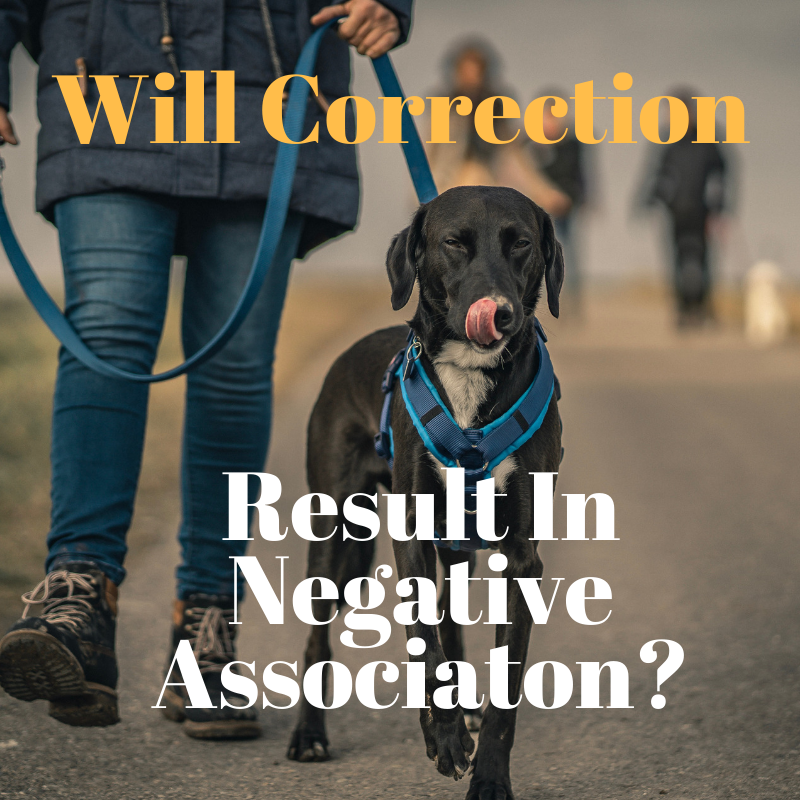Will using correction result in a negative association or fear? It makes perfect sense, doesn’t it? Of course, using any type of corrective training tool can be nothing but develop fear. Right? Well not exactly.
Whenever using any form of correction, it’s essential that the handler (you) shows your dog what I call the 3 pillars of correction;
1-How to turn on the uncomfortable feeling
(doing something that you don’t want them to do)
2-How to turn off the uncomfortable feeling
(stopping the amove behaviour)
3-How to avoid the feeling altogether
(not doing the above behaviour at all)
When a dog has been shown these key pieces of information, the handler can safely layer in correction even if the dog is around other dogs or people, without creating a negative association.
So how is that possible? State of mind corrections.
After the dog has learned the 3 pillars of correction, the handler can use correction to stop specific behaviours and specific states of mind. I always start with simple things like recall so that the dog learns that the pressure starts when they ignore my command to come. The pressure stops when they start walking towards me, and the pressure never happens if they come my way as I asked. Then I can layer correction over to boundary commands which means, I can use correction to reinforce a command like place. (go to your bed and stay) After that, I start to use correction around other dogs if the dog is dog aggressive and people if they are human aggressive.
If the dog is dog aggressive and lunging at other dogs, I first start to correct what I call the egregious behaviors. For example, when a dog lunges at one of my dogs, I call that an egregious behavior. When the dog is no longer doing that (that typically only takes about one-three short sessions) then I can move on to the finer details.
All the while I would be using food and praise when the dog is not lunging at my dog. So, the dog learns that lunging = not fun. But they are 100% safe when they don’t lunge at other dogs and they even get food and praise when they are acting well. The key to doing this is CONSISTENCY. Without consistency, it’s hard for the dog to learn that they are the ones in the driver’s seat.
After a week of focusing on the lunging, I will then start to focus on more of the process, the state of mind and dirty looks. Now that we have a dog who is not lunging at other dogs we shift our focus to correcting specific states of mind. In dog training, we often call these (hardness and softness) Softness is essentially when a dog looks submissive or open to feedback in the presence of another dog. Hardness is just that. Ears forward, chest out, fixated, etc.
So now we start to correct hardness and reward softness. This process can take weeks to do properly and can be done with human aggressive dogs too. Lastly, we spend time on catching any potential duuuuurty thoughts or actions that the dog might be subtly trying to send towards another dog without being noticed. It’s most often seen in the subtle corner of the eye glances.
Now, at what point does the dog start hating other dogs? Never if done correctly. They are taught that specific behaviors will illicit specific consequences. I’m not afraid of police officers. I know what the laws are, and I don’t break them. But I could learn to fear them if the local police randomly started kicking down my front door, or randomly grabbed me at the mall and put me in jail without cause. It’s the randomness that creates fear, not the punishment. If you show the dog what the crime is, and give them the time, they will not develop fear, they will develop impulse control. In essence, we are teaching the dog that their behaviors are what cause them discomfort, not the other dog.
I wanted to address this issue because it’s probably the most common question I get about dog training.
